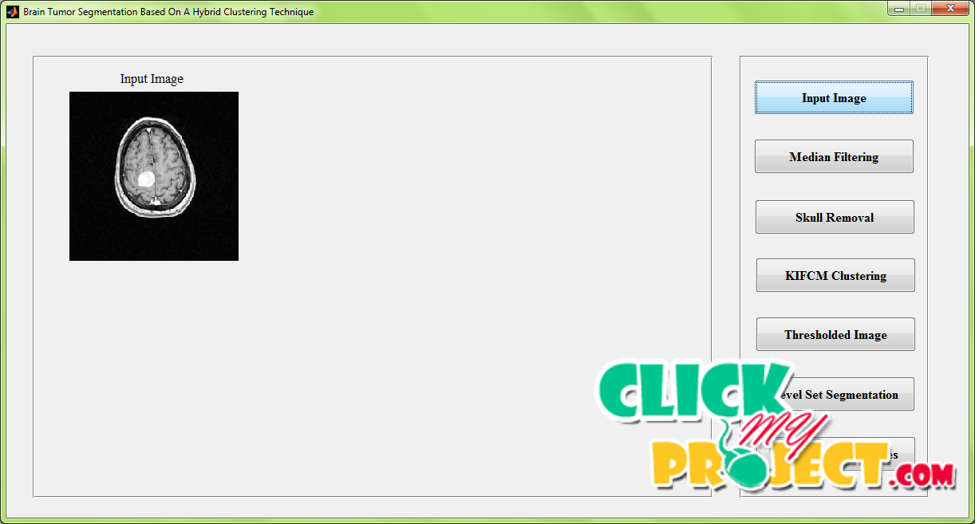Brain tumor segmentation based on a hybrid clustering technique
₹3,500.00
10000 in stock
SupportDescription
The segmentation in medical images were more helpful for the identification the diseased portion in the images. The preprocessing step is the first step of the segmentation process. The images were filtered using median filter which smoothens the overall image and makes that the intensity all over the image is normalized. Median filter is employed to smoothen the image and to filter unwanted pixels in the image. Median filter parses through the image pixel by pixel, replacing each pixel with the median of neighboring pixels thereby providing normalized intensity in the overall image. The noises in the images were replaced by the above process. The skull regions captured along with the brain region in the images were different intensity and in a large area. The skull regions were identified and removed based on the morphological operations. The morphological operations employed were open operation and close operation. The structuring element is a small binary image, i.e. a small matrix of pixels, each with a value of zero or one: The matrix dimensions specify the size of the structuring element. The pattern of ones and zeros specifies the shape of the structuring element. The closing of an image by a structuring element s is a dilation followed by an erosion. The opening of an image by a structuring element is an erosion followed by a dilation. Clustering process is employed for the images based on KIFCM process. The regions in the images that are having similar intensity is clustered using the KIFuzzy C Means algorithm. In fuzzy clustering, every point has a degree of belonging to clusters, as in fuzzy logic, rather than belonging completely to just one cluster. Thus, points on the edge of a cluster, may be in the cluster to a lesser degree than points in the center of cluster. An overview and comparison of different fuzzy clustering algorithms is available. Any point in the image has a set of coefficients giving the degree of being in the kth cluster. With fuzzy c-means, the centroid of a cluster is the mean of all points, weighted by their degree of belonging to the cluster. Each clustered region represents regions of different intensity. The skull regions were then removed from the images based on the morphological operations. Thresholding process is employed for the segmentation of the tumorous portions in the input image. The specific threshold for the brain tumor portion is identified based on the identification of the maximum pixel of the input image. The image pixels that were having maximum intensity were identified to be tumor portions. The threshold value is adjusted such that the value of the threshold value is 30 pixels lower than maximum pixel. The image pixels that are greater than the threshold value were assigned label one and others were given value zero. The pixels that were having value one is the tumor portion in the images and others were normal image portions. Level set segmentation process is employed for the segmentation of the tumorous portions in the input image. Level set segmentation process is employed by reducing the segmented portion till the curve enclosing the regions of interest is obtained. The tumor portion obtained using thresholding process is considered as the initial portion of the segmentation process. The images pixels surrounding the tumor portion that were having similar values nearby the input region is grouped. Contours were extracted around the detected regions. The process is repeated till the boundary the detection region is within the input region. The final result obtained is the segmented tumor portion. The performance of the process is measured based on the performance metrics like TP, FP, TN, FN, Accuracy, Precision and Recall.




